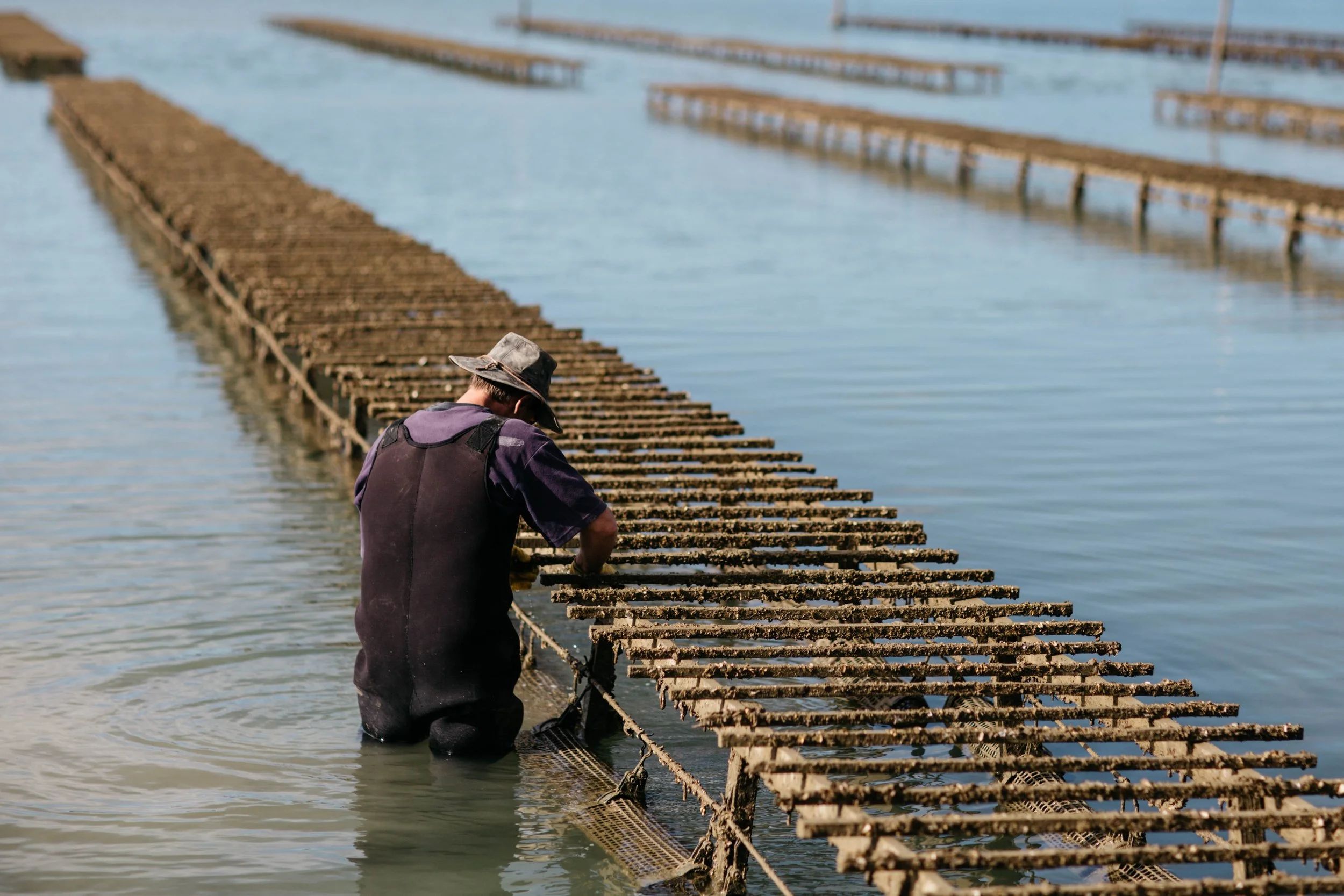MAHURANGI OYSTER CRISIS
As the trailblazer for oyster farming in New Zealand, the Mahurangi Harbour has long been renowned for the succulent oysters it produces.
Words by Andrew Hay
Since 1961, when the first commercial farms were established to cultivate the native Rock oyster, it has been home to an entire aquaculture industry. Not long after, Pacific oysters – believed by some to have arrived on the steel clip-ons added to the Auckland Harbour Bridge in the 1960s – established themselves. These fast-growing molluscs quickly overtook their native cousins and became the backbone of New Zealand’s oyster industry.
Oyster farming, like all farming, is tough work. It demands resilience, a passion for the sea, and deep respect for nature. For the small- scale family businesses along the Mahurangi River, oysters are more than a livelihood – they’re a legacy. The unique mix of fresh and salt water, combined with nutrient-rich tidal flows, creates ideal conditions for plump, flavourful oysters. The Mahurangi Harbour has long been recognised as one of the best growing environments in the country.
The industry has grown significantly over the decades, with oysters from the Mahurangi gaining well-deserved recognition at raw bars in restaurants all around New Zealand, extensive export markets, local markets, unique roadside sheds and stalls, and tourism. Basic economics meant increased demand for fresh, safe, live oysters. It is an industry that commands pride. They are a culinary treasure. Now under serious threat.
Oyster farming is tightly regulated by the Ministry for Primary Industries (MPI). Harvesting is automatically paused after rainfall to protect public health, as oysters filter 18 litres of seawater per hour. Rainfall is a known risk, with closures based on set calculations. What’s not factored in is the man-made pollution that has been pouring into the river during these rain events.
Recent residential growth in Warkworth has overloaded the town’s wastewater infrastructure. Stormwater from illegal or poorly managed connections is entering the sewer network, causing raw sewage to spill directly into the Mahurangi River after even light rain. This has led to repeated forced harvest closures, with some farmers losing an entire season.
These closures are devastating – not just for oyster farmers, but for the wider community. Mechanics, delivery drivers, engineers, and local markets are all impacted. Years of dedication to producing clean, safe, premium oysters are being washed away – quite literally.
Despite repeated warnings and appeals from the farming community, Auckland Council and Watercare have failed to act with the urgency the situation demands. A new treatment plant is planned for Snells Beach, but may not be operational until 2028 – far too late for many of the families trying to survive this season. Temporary fixes have been promised, but trust is wearing thin. Watercare’s public messaging has remained unchanged, despite the escalating crisis.
There are multiple farmers and businesses on the Mahurangi River that are affected by these closures. Some of these businesses include, but are not limited to: 6 Acre Oysters, Black Shag Oysters, Cowan Bay Oysters, Jade River Oyster Farms, Mahurangi Oysters, Matakana Oysters, NZ Oyster Farm Tours, Orata Oyster Farms, South Pacific Oyster Farms and True South.
Each one is a small business fighting to stay afloat. They need the public’s support in demanding better from those responsible. The community can help by contacting local MPs, raising awareness, and signing the petition to hold Watercare and Auckland Council accountable.
Oysters are part of our national identity. The farmers and businesses who make their living from the Mahurangi River deserve better. Let’s not let this legacy be flushed away.
Mahurangi Oyster Farmers Association - www.facebook.com/SupportTheOysterFarmersOfTheMahurangi
To join the cause sign the petition below:
https://www.change.org/p/stop-watercare-auckland-council-from-polluting-the-mahurangi-harbour
